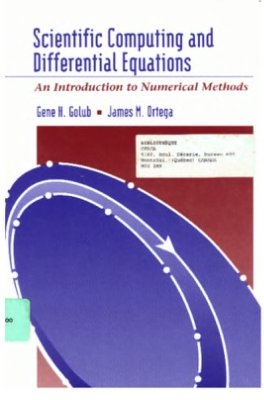Academic Press, 1991. - 344 pages.
Scientific Computing and Differential Equations: An Introduction to Numerical Methods, is an excellent complement to Introduction to Numerical Methods by Ortega and Poole. The book emphasizes the importance of solving differential equations on a computer, which comprises a large part of what has come to be called scientific computing. It reviews mode scientific computing, outlines its applications, and places the subject in a larger context.
This book is appropriate for upper undergraduate courses in mathematics, electrical engineering, and computer science; it is also well-suited to serve as a textbook for numerical differential equations courses at the graduate level.
* An introductory chapter gives an overview of scientific computing, indicating its important role in solving differential equations, and placing the subject in the larger environment
* Contains an introduction to numerical methods for both ordinary and partial differential equations
* Concentrates on ordinary differential equations, especially boundary-value problems
* Contains most of the main topics for a first course in numerical methods, and can serve as a text for this course
* Uses material for junior/senior level undergraduate courses in math and computer science plus material for numerical differential equations courses for engineering/science students at the graduate level.
Scientific Computing and Differential Equations: An Introduction to Numerical Methods, is an excellent complement to Introduction to Numerical Methods by Ortega and Poole. The book emphasizes the importance of solving differential equations on a computer, which comprises a large part of what has come to be called scientific computing. It reviews mode scientific computing, outlines its applications, and places the subject in a larger context.
This book is appropriate for upper undergraduate courses in mathematics, electrical engineering, and computer science; it is also well-suited to serve as a textbook for numerical differential equations courses at the graduate level.
* An introductory chapter gives an overview of scientific computing, indicating its important role in solving differential equations, and placing the subject in the larger environment
* Contains an introduction to numerical methods for both ordinary and partial differential equations
* Concentrates on ordinary differential equations, especially boundary-value problems
* Contains most of the main topics for a first course in numerical methods, and can serve as a text for this course
* Uses material for junior/senior level undergraduate courses in math and computer science plus material for numerical differential equations courses for engineering/science students at the graduate level.

